Currently on view at Paula Cooper in New York is Charles Gaines’ “Faces 1: Identity Politics.” Up through June 23, the show includes work that employs a layering system by the artist, addressing attempts to delegitimize critiques of racism by the conservative right in America. Through representation, Gaines shows that identity politics have been around since Aristotle, and through thinkers like Karl Marx, Michel Foucault, and Malcolm X.
Whitewall spoke with Gaines about his latest works and systems.
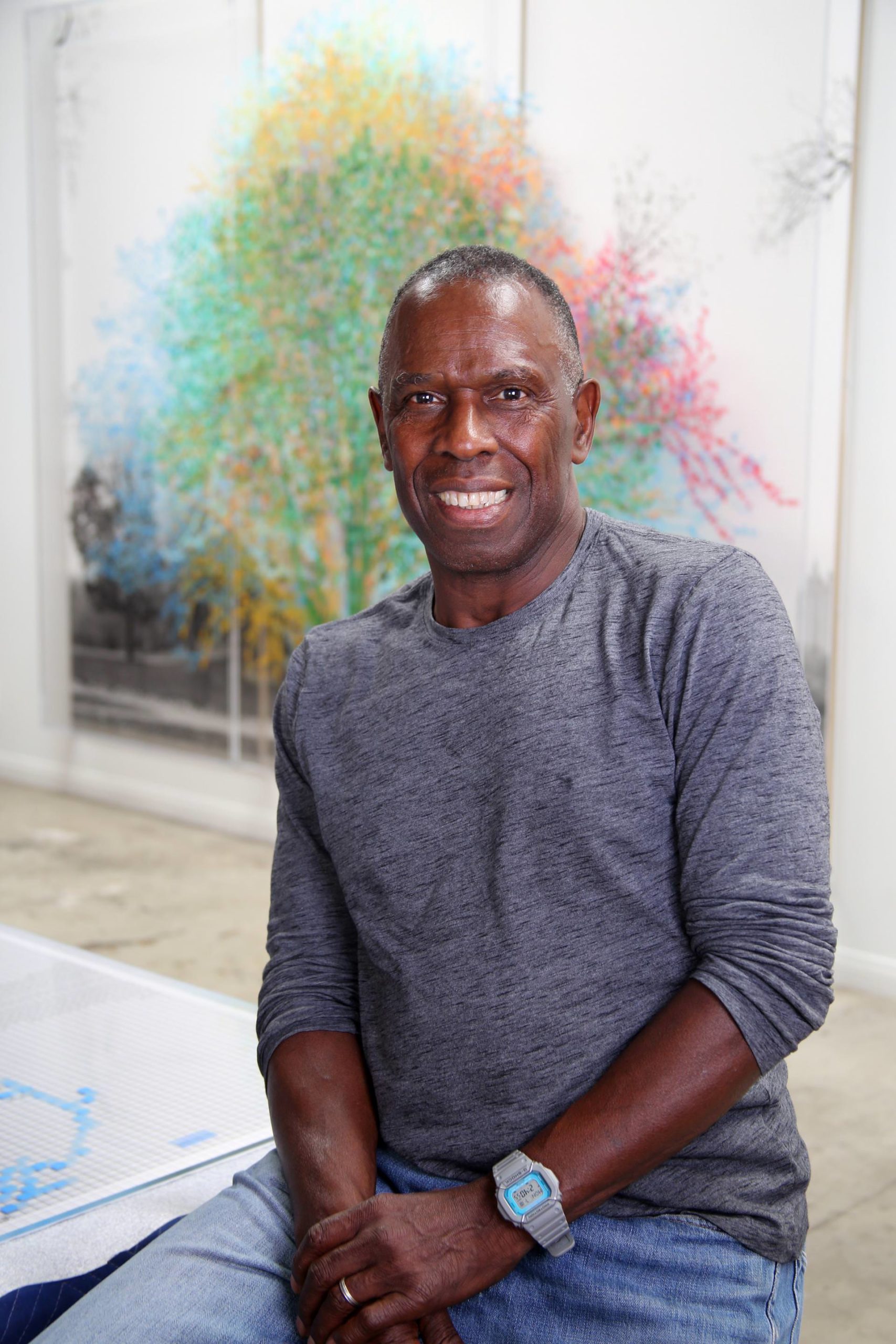
Courtesy of the Artist
Photography by Katie Miller
WHITEWALL: What was the starting point for this new series of large-scale works?
CHARLES GAINES: “Identity Politics” is a work that addresses my concern that conservative politics has been working very hard to delegitimate the concept as a legitimate critique of racism in America. It seems that right wing commentators have tried to define it as a tool by minorities to make white people feel guilty about their role in perpetuating racism. And as a basis for their use of the term to argue its continued role in making an uneven playing field is society that privilege white people.
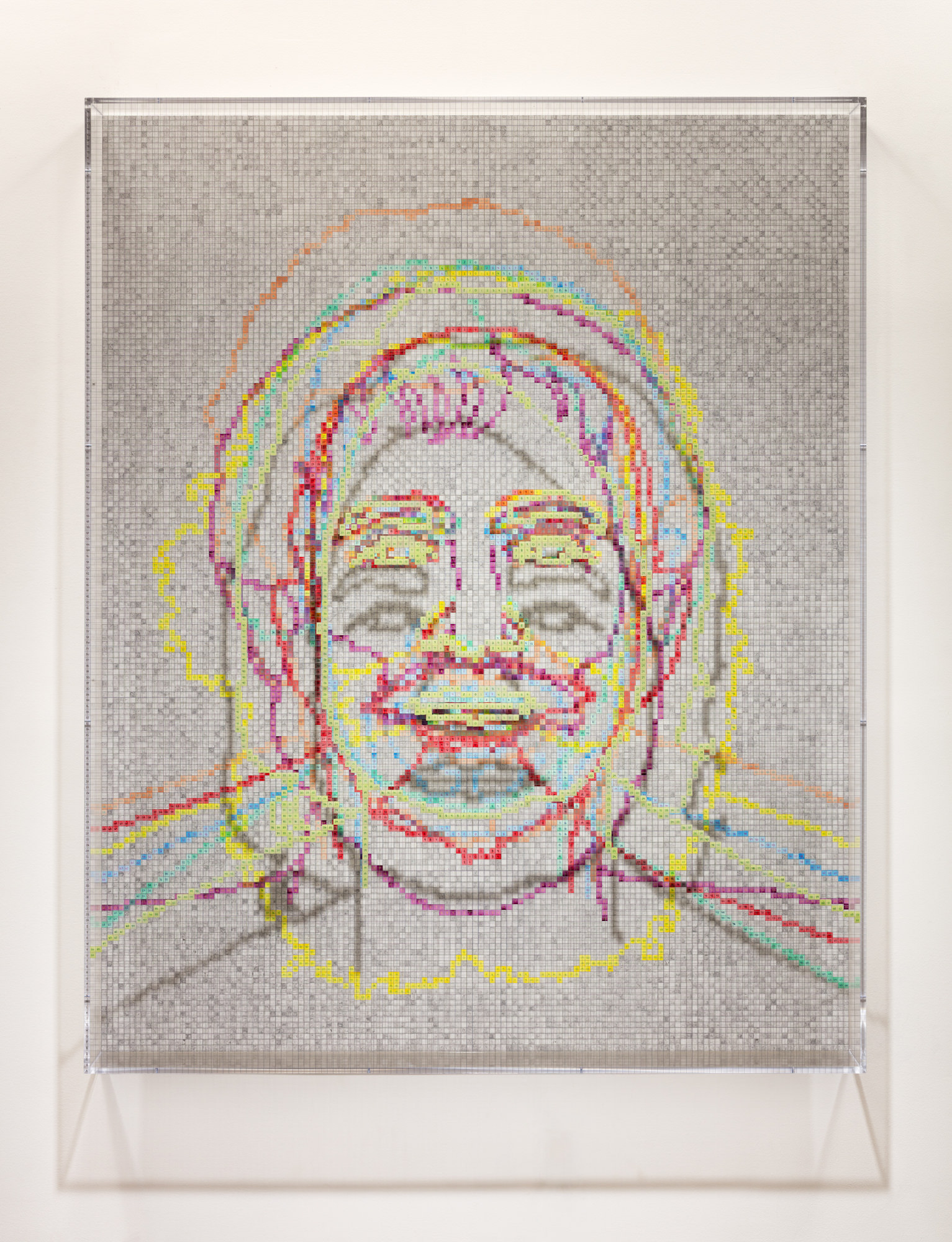
Charles Gaines
Faces 1: Identity Politics, #7, Dolores Huerta
2018
Acrylic sheet, acrylic paint, lacquer, wood
74 x 59 1/8 x 5 3/4 inches
© Charles Gaines, courtesy Paula Cooper Gallery, New York
As is the case with the concept of affirmative action, conservatives view it as a way for minorities to ask for special treatment that they do not deserve. The idea behind this work is to bring the basic racist assumptions that underlie the critique of the concept into the light of day by arguing (through representation) that identity politics is an old concept that is part of a larger evolution of ideas that helped establish what it means to be human, what it means to be an individual, hence what it means to have an identity.
This is an old investigation whose ideas have been unfolding for 2000 years, starting with Aristotle and proceeding through the writings of philosophical discourses of thinkers such as Marx, Du Bois, Foucault, Malcolm X, and others. It is part of our understanding, part of the process of the acquisition of knowledge.
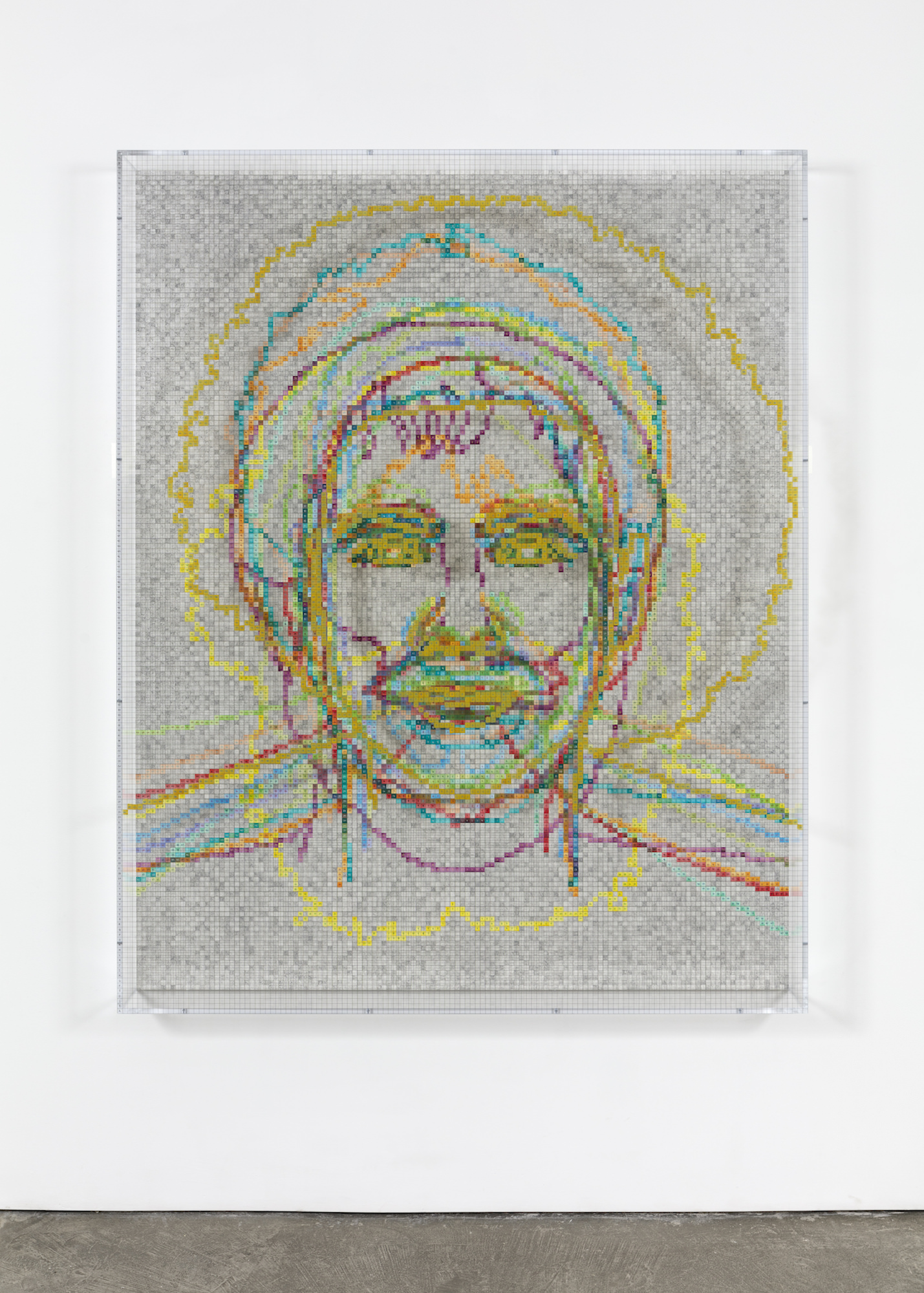
Charles Gaines
Faces 1: Identity Politics, #12, bell hooks
2018
Acrylic sheet, acrylic paint, lacquer, wood
74 x 59 1/8 x 5 3/4 inches
Photo by Steven Probert
© Charles Gaines. Courtesy Paula Cooper Gallery, New York
In order to address this, the work produces the outline of the faces of major thinkers such as the ones mentioned and, in a series, I plot the shape of each face on top of each other. Using the grid, each face becomes part of a palimpsest of faces, each overly revealing the faces that preceded it in the series hence forming a metaphor of how the ideas each put forth built on each other over time to form an understanding. It is a work that utilizes my process of employing a system to produce a work of art, which is part of my large interest in the critique of representation, especially the question of how we come to attach meaning to images beyond the metonymy of simple naming.
WW: How did you select the people whose images you wanted to capture?
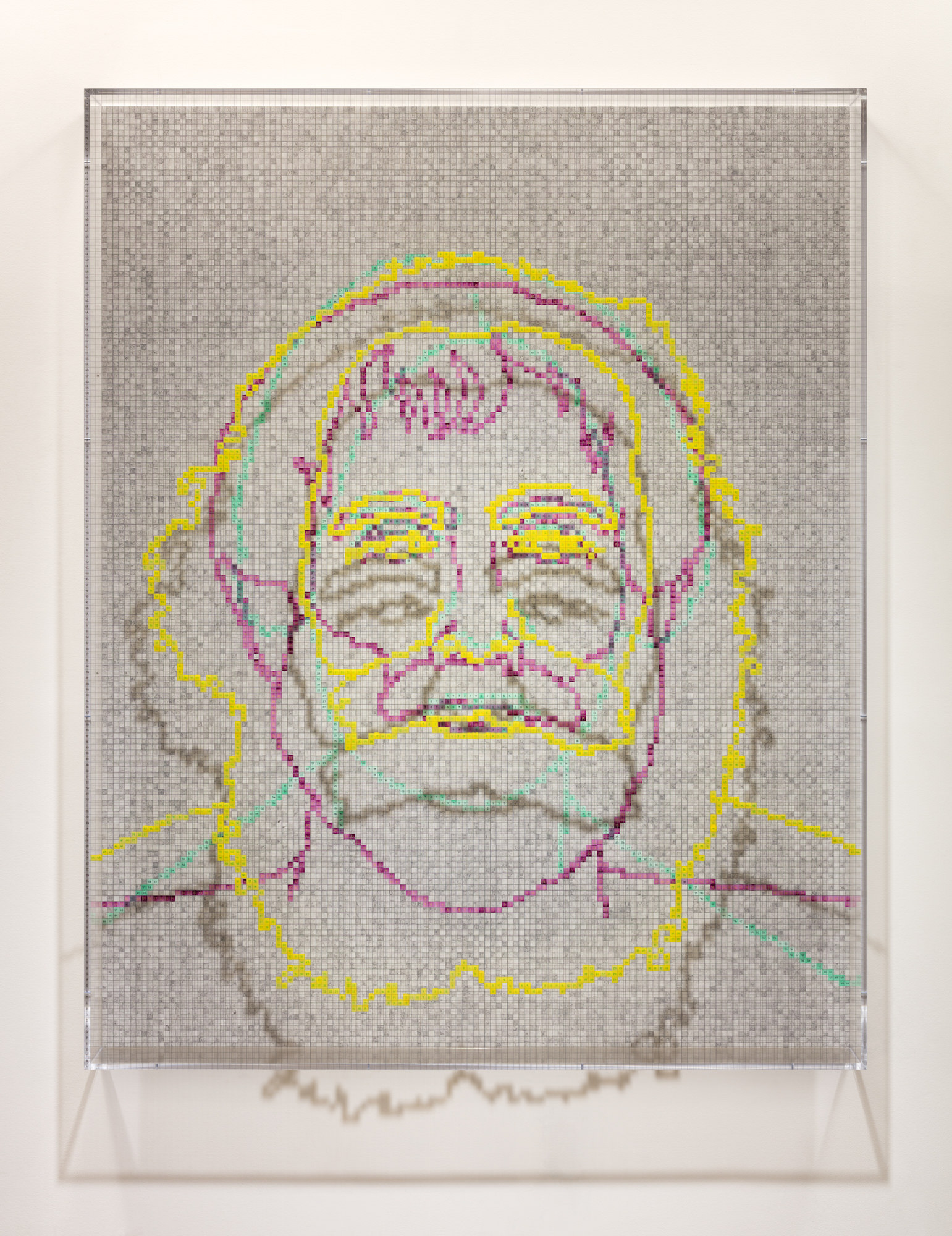
Charles Gaines
Faces 1: Identity Politics, #3, Karl Marx
2018
Acrylic sheet, acrylic paint, lacquer, wood
74 x 59 1/8 x 5 3/4 inches
Photo by Steven Probert
© Charles Gaines. Courtesy Paula Cooper Gallery, New York.
CG: We developed an archive of dozens of thinkers on the subject, we have collected more than 50 theorists, philosophers, poets, and writers—people who have contributed to the idea of the self and identity. This is the first work that employs these people. My intention is that future works will list other thinkers on the subject. They are sequenced chronologically, to follow historical time.
WW: How does their place in history relate to your idea of visually representing identity as a construct, rather than a visual rubric?
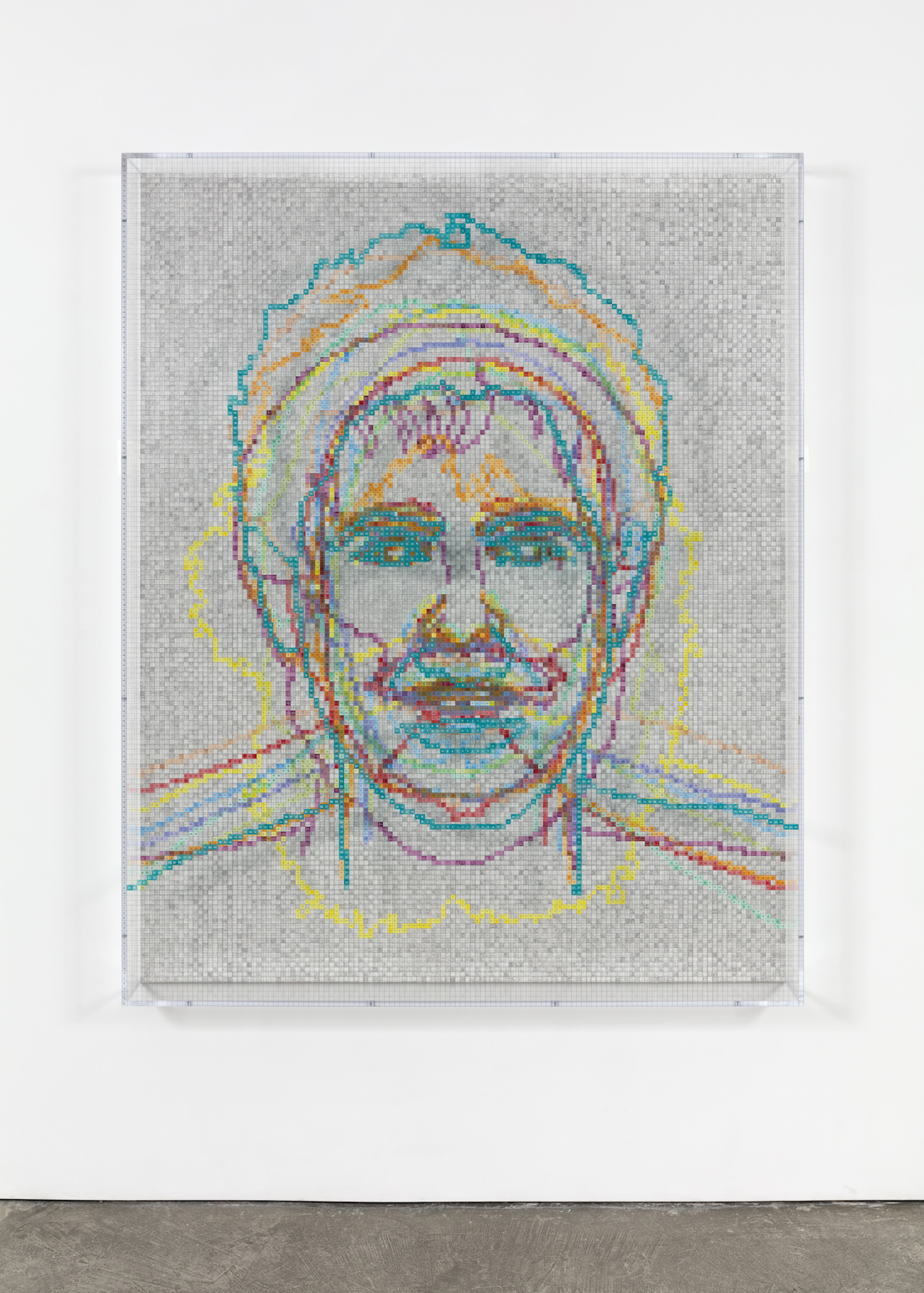
Charles Gaines
Faces 1: Identity Politics, #10, Edward Said
2018
Acrylic sheet, acrylic paint, lacquer, wood
74 x 59 1/8 x 5 3/4 inches
Photo by Steven Probert
© Charles Gaines. Courtesy Paula Cooper Gallery, New York
CG: The image in this work is intended to operate metaphorically or allegorically. The historical sequence forms a narrative, this narrative is metaphorical because it is supposed to be linked to the development of ideas over time. So, the system sets up a sequence of systematically overlaid faces where each work is shows one face (at the beginning of the sequence) to 12 faces overlaid on top of each other (at end). In between the individual works will show two faces, then three, etc. This system is intended to form a metaphor where each face represents a concept of identity. And the aggregate represents the evolution of the concept as it passes through the writings of the individual thinkers.
WW: Can you tell us about the musical scores of Manifestos 3, which draws from James Baldwin’s essay “Princes and Powers” and Martin Luther King Jr.’s December 7, 1964 speech?
CG: Baldwin wrote “Princes and Powers” after attending The Conference of Negro-African Writers and Artists (“Princes and Powers,” from Nobody Knows My Name, (New York: Dell Publishing) 1963, pg. 24). He responded to presentations of the important writers of color of his time. I regard this text as one of the earliest postcolonial narratives, attempting to think about the meaning of the diasporic African, and realizing that the cultural and political differences are vast. In concert with my other “Manifestos” works, Manifestos 3 selects about 300 words of the Baldwin text and translates its individual letters to musical notes. The letters A through G are translated in to the notes A through G. The letter H is translated as Bb, in keeping with a Baroque tradition that translated text in to music. Every other letter is either a silent beat or rest. Each letter has the value of an 8th note and it is written in 4/4 time.
The translated letters form the melody, and harmony is produced by taking the first letter in each word that is used in musical notation and translating that into a major, minor, augmented or diminished chord. For example, the letter A in the word “answer” is translated and turned in to one of the chords, depending upon where it shows up in the system.
The piano score that results is recorded by a professional musician and becomes the sound track to the scrolling text that is part of the installation of the work. Consistent with my other systems works, I am interested in how the system makes the relationship between text and sound arbitrary, but in spite of that, the experience becomes meaningful to the spectator. The relationship to image to meaning is in my view the result of a political process where culture and experience are the context for the acquisition of meaning.
This is in contrast to the idea that meaning is the result of a transcendentalism operating from the subjectivity of the writer or speaker. This pits subjectivity, a transcendental idea against culture, where politics play out. I argue that the acquisition of meaning operates in a political space. This makes the process and the experience of “Manifestos” connected to the subject of the essay.
WW: What was the most challenging piece for you in this show?
CG: Faces was most challenging since I never used my grid work to address a political idea so directly. Also the visual system is different, I resolved the overlay of faces in a way different than the earlier “Faces” works from the 70s and 80s.








